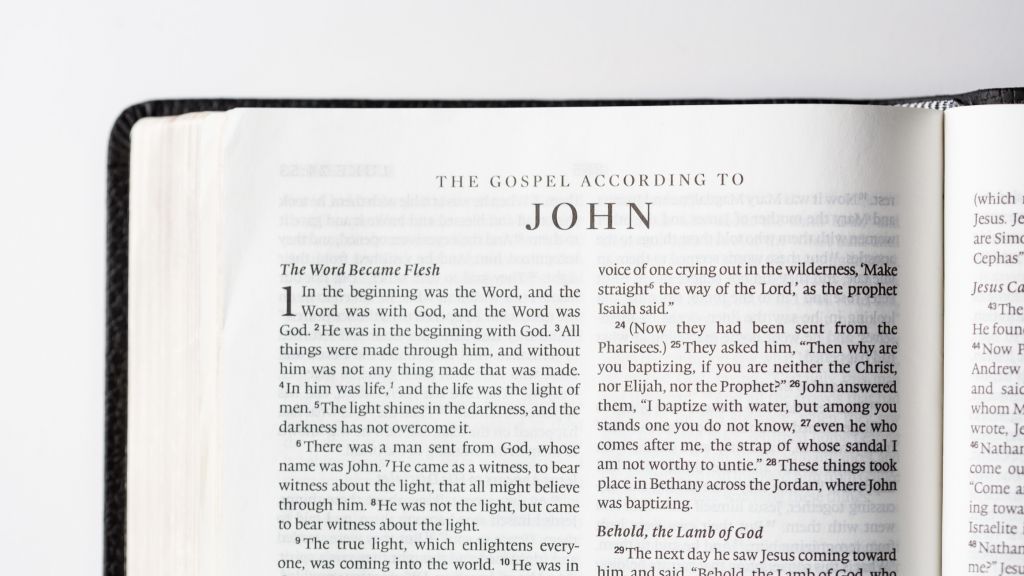by Christian Salcianu, ADC director
A peculiar gospel
Even a casual reader of the gospels will notice that John’s Gospel differs from the other three. Many of its peculiar features have been brought to the attention of Bible students: the divinity of Jesus, His unique relationship with the Father and the Holy Spirit, a story of Jesus that begins not in Nazareth or Bethlehem but rather with a pre-existence from everlasting etc.

One of this gospel’s characteristics is a particular approach to Jesus’ miracles. Have you noticed that only a few miracles are reported on its pages? Seven, to be precise.
Count along with me (or give it a new reading):
1. Turning water into wine (ch. 2)
2. Healing the son of a nobleman (ch. 4)
3. Healing of a paralysed man (ch. 5)
4. Multiplication of bread and fish (ch. 6)
5. Calming the storm (ch. 6)
6. Healing of the blind man (ch. 9)
7. The resurrection of Lazarus (ch. 11)
Why seven only? Why these only?
Make no mistake:
“Jesus performed many other signs in the presence of his disciples, which are not recorded in this book. But these are written that you may believe that Jesus is the Messiah, the Son of God, and by believing you may have life in his name.” (John 20:30-31; 21:25).
No lapse of memory, nor fear of being superfluous. It is mandatory then — John had criteria of selection. The diligent student will search all these seven wonders and notice something particular:
These miracles are done (and perceived/felt) from a distance. Yes, in none of them is Jesus’ touch needed at the exact moment when the miracle takes place.
Resurrections
One example will make the case: remember the resurrection of Jairus’ daughter? Well, Jesus took her by the hand (Luke 8:54). The dead son of the widow in Nain? Brought to life when Jesus touched the bier (Luke 7:14). None in John’s gospel…
Review the resurrection of Lazarus (John 11), thinking of a remote approach, “no touch”, power of the word only: (1) rolling the stone away, (2) keeping a distance, (3) calling the dead by name, (4) voice only, (5) letting others untie the dead. No magic tricks, no sleight of hand, no cover-ups. Oh, did I mention (6) it took place… days later?
It has been said that John’s gospel was written for the “next generation”, even for the last. For those that didn’t have the privilege to touch Jesus or be touched by Him. For that generation that will believe without touching.
A gospel, a story of Jesus’ life written for a… wireless generation!

Hopefully, by now, you see with new eyes why Jesus says to Thomas:
“Because you have seen me, you have believed; blessed are those who have not seen and yet have believed.” (John 20:29)
John’s gospel remains a model for you and me, for our “evangelism”, preaching and sharing a Jesus that is not limited to a space, a time, a ritual, or a generation.
The great commission in John’s gospel is not a go and teach, preach and reach, but instead a “Follow Me!” (John 21:22-23)
TRY JESUS!
The life and teachings of Jesus Christ are the foundation of Christianity. According to Encyclopedia Britannica, this is the largest of the world’s religions and, geographically, the most widely diffused of all faiths, having a constituency of more than two billion believers. One wonders: what is it about Jesus that drew so many people to follow in His footsteps?
Based on the four Gospels, the first series of our ADC course entitled Try Jesus will take you on a journey from His birth to His resurrection. The second series is the perfect follow up, focusing on the amazing teachings of Jesus. Learn more!





